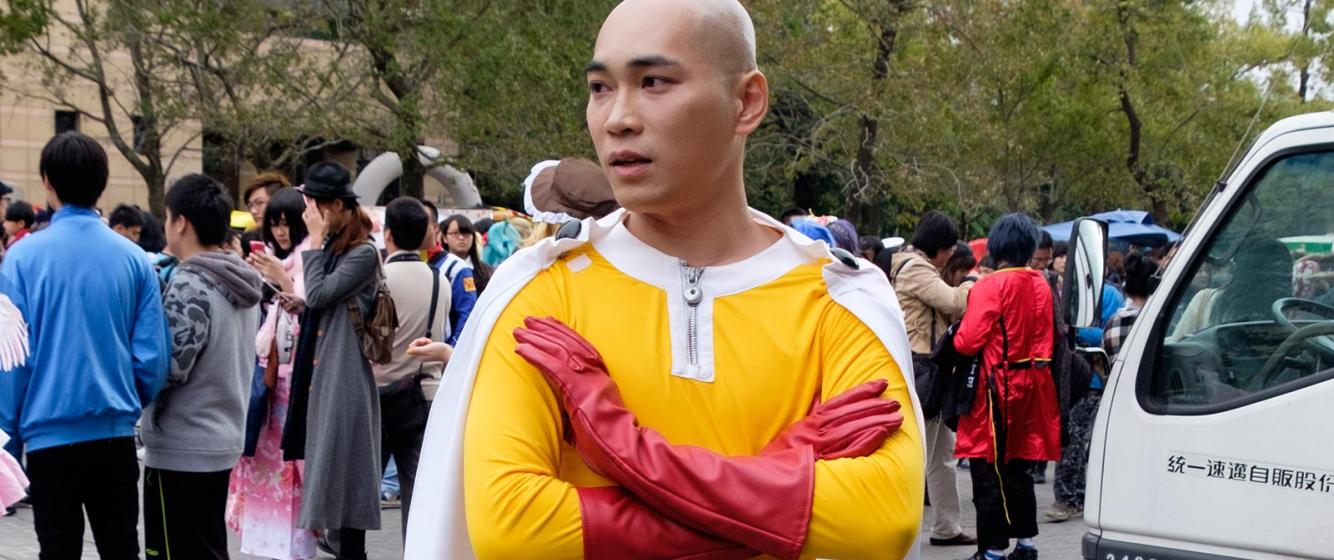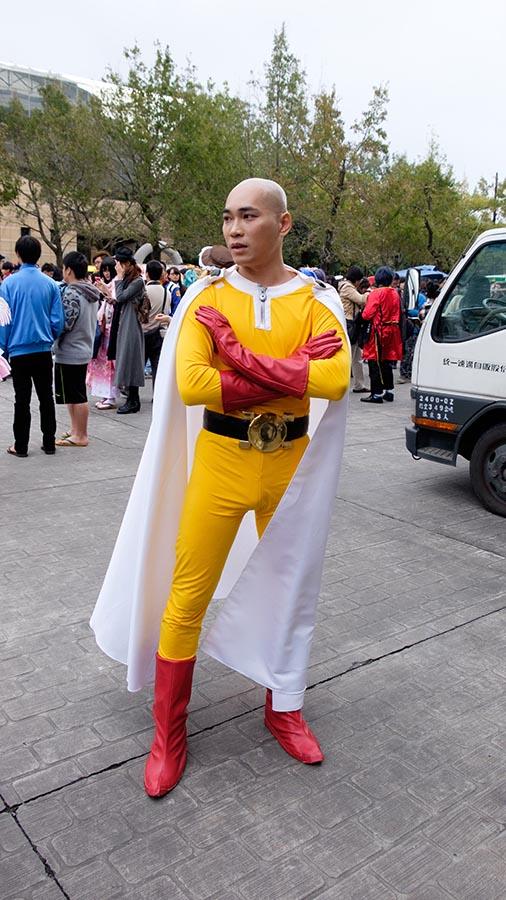
One Punch Man as Postbubble Pop Culture
In 2009, an artist using the name ONE published a limited run, amateurish webcomic called One-Punch Man (Wanpan Man). It was a frivolous ironic take on Anpanman. Featuring Saitama, a washed up job-hunting failure for a hero. Saitama lived, or barely survived, he might say, in City Z, on the main continent of an alternate Earth. Since he can’t land a job, the comic begins with Saitama deciding to join the “Hero Association.” This is ironic because the inspiration for creating the Hero Association was Saitama’s own inexplicable choice to defend a bratty young boy from an unlikely monster bent on murder. But more on that later. He trains his body for three years to prepare for the entrance exam for the Association. His training is so intense that he loses all his hair. However, he also becomes capable of defeating any villain with a single punch. Hence the name of the manga - One-Punch Man (Wanpanman in Japanese - which sounds suspiciously like Anpanman).
Like Anpanman, Saitama’s problems are not with supervillains. Sure, he fights and defeats them. His real problems are mundane issues like meeting work quotas or being short of cash. Herein lies the genius of ONE’s idea. Superheroes reflect the times in which they were created. Saitama was created in the middle of Japan's economic "Lost Decades" (1990 - 2015). His personality, his work as a superhero, his problems, and even the circumstances of his creation reflect that fact.
In the 1980s during the Bubble Economy, Japan was booming, its economy and people awash with cash. Tokyo was the most expensive city in the world. It was a golden time to become an adult. There were usually multiple corporate jobs available for every (male) college graduate. This was the hopeful, team-oriented world of Anpanman. Wanpanman is about the world after the Bubble burst in 1990. Japan faced decades of a grim reality: jobs became much harder to get.
The Lost Decades became the era of the “freeter” - a hybrid of the English “free,” meaning unattached to any permanent employment, and “arbeit” - German for work, but long used in Japanese to mean part-time low-wage labor. In 2014, according to the Japanese government, 40% of all jobs were part-time jobs. While female employment also suffered, because of the burst of the bubble, the most obvious shift was in male employability. Young men found it disastrously difficult to get jobs, which, for social respectability, they were expected to have.
This is exactly the situation that Saitama (One-Punch Man) found himself in during his first fight with a monster. In this first episode, Saitama has just taken the physical and paper exams to join the Hero Association. The irony drips in this story. He passed the physical exam easily. However, his poor score on the paper test land him with a Class C Hero status. Thus we learn that the most capable hero the Association have ever had (and the one who inspired its creation) can never reach his potential because of bureaucracy.
His low rank as an official hero parallels his low rank while searching for employment as a corporate employee (a salaryman). He flashes back to three years previous, when, walking alone down the street after failing yet another job interview, he meets “Crablante” - a giant crab with human legs girded with tight white underwear.
In the flashback Saitama remembers no fear. He only felt frustration and anger. Crablante identifies with the fact that Saitama doesn’t care about anything so he lets him live, saying “Like mine, your eyes are lifeless. Out of sympathy, I’ll let you go.” This is not mercy. It is from a sense of shared torture. Saitama’s misery makes Crablante feel like he is not alone.
But they meet again in a small park. Crablante has found his victim - he wants to “tear the arms off” of a young boy who drew nipples on his crab chest while he was taking a nap. Saitama almost lets him. He reasons that the kid is ugly and a brat, and it's none of his business. But in a world-changing moment, he saves the kid by tearing out one of Crablante’s googly eyes and pulling his brains with it, killing the monster. The boy’s rich father, Agony, created the “Hero Association,” after hearing about the confrontation with Crablante. But he doesn’t know who saved his son. So the association that Saitama decides to join three years later exists because of his heroic act, and yet he can’t even become a full-fledged hero. This is like saying he can’t get a job at his own business.
All of this tracks with the experience of other young men of Saitama’s age. The social expectation was for men to go to college, get a full-time job that guaranteed lifetime employment in a single company, and get married, raise a family, and eventually retire. But this was unrealistic in the new economy, which Saitama is experiencing in the episode. Wages in 2009 were down by about 13% from the 1980s. Jobs were also much harder to come by. In 1989 there were 4 jobs available for every male college graduate. By 2015 there were 4 or 5 college graduates available for every full-time job. Many men became “freeters” with little money, and didn’t do much socializing. They went to work, came home, and spent most of their free time on inexpensive hobbies. They had no job, and so no public persona or means of acting for the good of society. However, like Saitama, their low status did not mean that these people were losers. It only meant that social conditions forced them into the loser’s pool.
Saitama feels this keenly. It is why he does not react to Crablante’s threats. He has swallowed his status as unworthy. Crablante, a human who became a crab after “eating too much crab” is the same. He’s given up on himself. He has “dead” eyes, takes naps in the middle of the afternoon, contributes nothing to society, consumes too much food, and is willing to commit atrocities because he feels the world has never cared about him.
Saitama is an archetype who represents the experiences of an entire generation. In his hypercompetitive world, jobs are inaccessible. Supervillains regularly appear to harass and torture people for no particular reason. Even the Hero Association puts Saitama in a marginal role despite his obvious qualifications. One Punch Man’s world is a bureaucracy through and through. Because of this, the human experience is deadening. Saitama chooses the superhero life to give his own life some meaning. But he finds that he has simply joined another institution. This bureaucratic, hypercompetitive, meaningless world where useful actions are nearly impossible is what Crablante is referring to when he talks about Saitama’s dead eyes.
Saitama defeats Crablante with toughness and strategy. He decides not to give up on himself, like Crablante has, by accepting his loser status. He chooses the life of a hero: a role in which he will be useful, and, he expects, appreciated. But he finds that to do good, one must submit to the bureaucracy. To be paid, have social impact, and not be taken as a social outcast, Saitama needs to find work as a Class-C Hero. So his attempt to find meaning by dropping out of the rat race lands him right back in the rat race. This is why, even as a hero, Saitama is still pessimistic. He still has dead eyes.

Add new comment